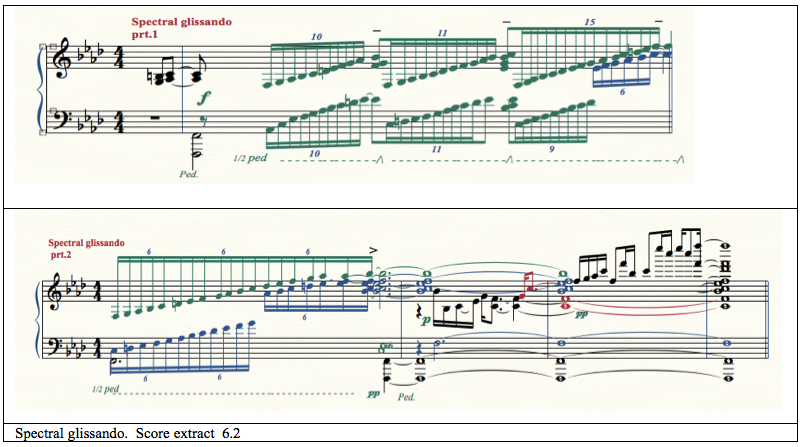1. Spectra glissando:
Played at fortissimo, a two handed scale-like ascending phrase opens up the wide spectra of the Stuart soundscape. Half and full pedaling of the damper pedal enables a combination of articulation for the beginning of each ascending line, as well as the full sustain of the bass note, and the overall array of sound. A subsequently large portion of the piano’s frequency range is sustained in the final chord with the addition of the lowest note F0 The array of colour and stable clarity within the sound of the Stuart piano tonal is displayed with this pianistic application. 384
| Spectral Glissando .wav |
| Spectral glissando Sound table 6.2 |

This spectral glissando exhibits the enhanced tonal balance and clarity observed in the Stuart piano sounds in chapter four, over a frequency range of seven octaves, from F0 to F7. The cluster chordal pause points of the spectral glissando above notated with tenuto and accent markings, produce a clearly sustained, stable and transparent clarity, which doesn’t change when the melodic treble layer of the semi-quavers in the 2nd & 3rd bars of prt. 2, are added.
The spectral glissando sound was realized on the expanded compass of the102 keyed Stuart piano, from the lowest C0 16Hz and the highest F8, 5587.65 Hz. The lowest note, F0 in the 1st bar of prt. 2, is 4 notes below the bass range of the 88 key modern piano. This is the widest compass of any piano today.
384 The Australian pianistBill Risby played a similar sound on his recent totally improvised CD ‘One’, see appendix 6a.3




